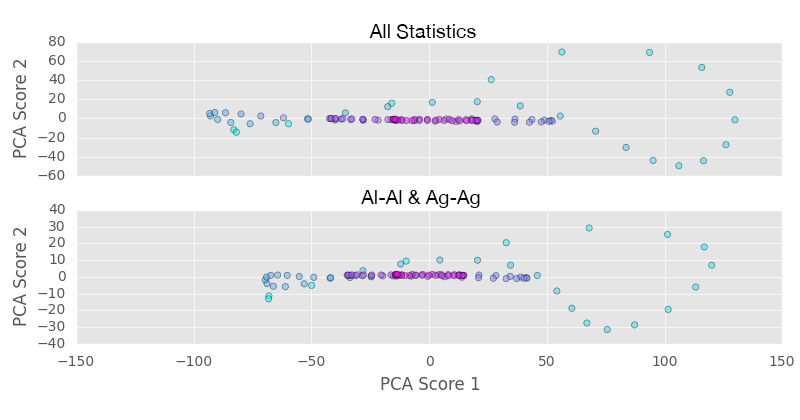Quick Recap
-
Reduce our correlations to only the essential ✓
-
Truncate the 2-pt statistics ✓
-
Study our transient data ✓
-
Use time-varying regression to model our simulation data

Reducing Correlations
- Only two sets of correlations are dependent, clearly the model doesn’t need all six
- This doesn’t mean all pairs of correlations will work equally!
-
We ran our entire pipeline on combinations of two correlations to see which perform the best
-
This was computationally expensive, but still feasible to do with just 6 choose 2 combinations.

- Ag-Ag and Al-Al performed the best with around 0.74
- Al-Al and Ag-Cu performed very close with around 0.72

Truncating statistics
- Truncation based of average 2-pt statistics in each sample in steady state
- Al = Green, Ag2Al = Orange, and Al2Cu = Blue
Choosing a vector size

Example for autocorrelation

All steady state data

A New Pipeline
- We created a whole new pipeline to perform our transient data linkages.
- Its more than 100x more expensive than the previous pipeline

Transient Data
PCA components of a single simulation over time

- Wild oscillations until the early 100s
Here are just the first 100 points plotted out:

A sanity check of our correlation pair from earlier

Future Work
- (Nov) modeling the time-varying behavior of our system (we are close!)
- (Nov) post about transience
- (Nov) post about steady state performance
- (Dec) Final “In Summa” Post
- (Dec) Final Presentation